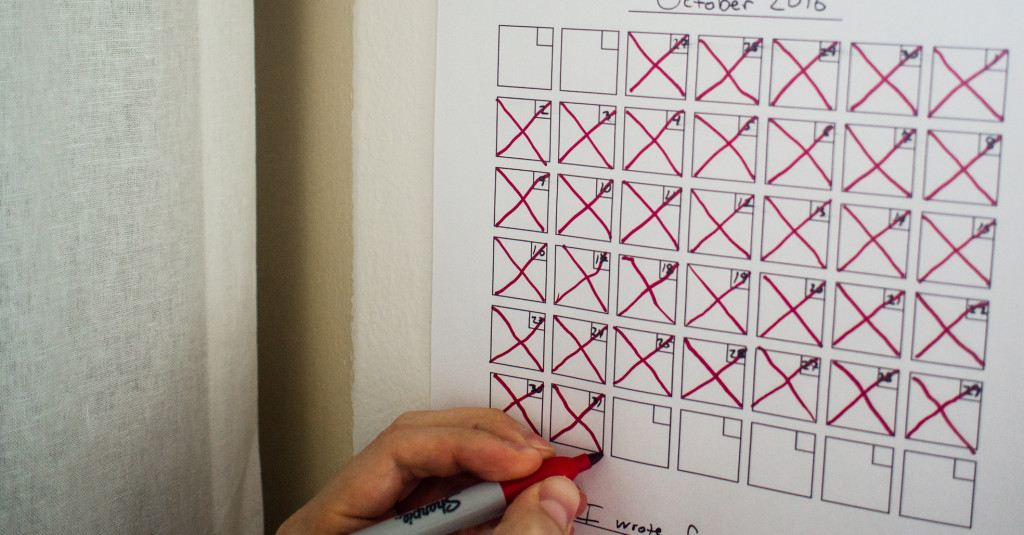Staring at a blank screen, you’re not sure what to write. On the edge of losing your mind, you’re like Jack Torrance in The Shining, filling pages with the proverb “All work and no play makes Jack a dull boy.”
You’re blocked but you don’t have to be. You can finish that blog post, turn in that essay, or ship that novel you’ve been working on from the snowy Overlook Hotel. I’ll show you how.
What is writer’s block?
Writer’s block is like a stomach ache: it’s a symptom. Was it the six cups of coffee, the barbecue, or the all-you-can-eat buffet? You need to figure this out.
What is causing your writer’s block?
- You believe you’re not a good writer. Overcome the ‘I’m Not a Good Writer’ Belief and Self-Doubt.
- Perfectionism has you stuck. Get Over Your Perfectionism and Write Something.
- You’ve got a bad case of procrastination. Build a Writing Habit that Sticks.
- You can’t focus. Use the Pomodoro Technique to Manage Your Writing Time.
Here’s a technique which helped me overcome writer’s block.
The Two Writing Hats Technique
Do you write a first draft and edit it at the same time? This is like switching between two tabs on your computer every few seconds. Creating and critiquing use different parts of your brain, which means writing and editing at the same time is a recipe for writer’s block.
You want to plan writing sessions intentionally so your only focus is writing your first draft, or editing it, never both. The Two Hats Writing Technique helps you do this.
Put on your Creator Hat when writing a first draft
When you wear your Creator Hat, you’re open to all possibilities and ideas. Words flow onto your page without judgement (even if they’re mispelllllllllleed).
You have ENDLESS POSSIBLIITIES with your writing. Write write write, new ideas flowwww…… Break rewl$. Who cares about pncutation? No backspeca alowed. Give me a FOCUS and I will writee write writee about it. It’s okay, I’m just your FIRST DRAFT.
-Your Creator Hat
Before putting on your Creator Hat, prepare a writing prompt at the very least, and better yet, an outline. Then just start writing. No backspacing or deleting allowed.
For first drafts, no backspacing or deleting is allowed. Share on XWear your Editor Hat when revising your draft
When you put on your Editor Hat, you become more critical and cautionary. This hat is best worn when you want to clean up your draft before publishing it.
I’m the sheriff in this town. You’d better check your facts on that research cited. And fix those spelling mistakes. I don’t think that last section flows very well, you’d better fix it. Have you tried reading the whole piece out loud? Have you printed it off and edited your words in print?
-Your Editor Hat
When editing, try to play devil’s advocate, move words around, remove clutter, and simplify.
Productive procrastination
For each piece you’re working on, create space between your creating and editing sessions. Don’t edit work that you drafted that same day. Give the piece time to sink in and you’ll be able to approach it with a fresh pair of eyes.
Letting your mind take a break allows your creative juices to flow. Share on XWhen you let the first draft sit for a few days, your subconscious has a chance to come up with new approaches:
When you take a walk, go for a run, or pursue everyday activities that don’t require effortful focus, your mind can enter a state of open attention. During these periods, other parts of the brain can be heard above the stream of intentional thought. Ideas often appear out of nowhere, or we suddenly remember important, unfinished tasks we had forgotten.
-Anne Janzer, The Writer’s Process
Need more convincing?
Using the Two Hats Writing Technique, I unblocked myself and doubled my writing output. Yes, I spent more time editing my work, but it was worth it. And with practice I improved.
Key Takeaways
- Writer’s block is like a stomach ache: it’s a symptom of something deeper you need to figure out.
- Writing a first draft and editing it at the same time can lead to writer’s block, especially if you tend towards perfectionism.
- The Two Hats Writing Technique: Plan your writing sessions intentionally so your only focus is the first draft, or editing it, never both.
- Creator Hat: For writing a first draft. Open to all possibilities and ideas. No backspace or delete key allowed.
- Editor Hat: For revising your draft into something you can publish. Judging, cautionary, and checking for mistakes. Play devil’s advocate, simplify, and declutter your writing.
- After writing your first draft, procrastinate on editing for a few days. When you let your work sit, your subconscious has a chance to come up with new approaches.
Subscribe to the newsletter below so you don’t miss out on more writing productivity tips.
(photo by Steve Johnson)

 This challenge has changed my life. Today, I go to the gym 3-6x a week, write about 2,000 words a day, and read every day (all habits or becoming habits).
This challenge has changed my life. Today, I go to the gym 3-6x a week, write about 2,000 words a day, and read every day (all habits or becoming habits). After a few days you’ll have a chain. Just keep at it and the chain will grow longer every day. You’ll like seeing that chain, especially when you get a few weeks under your belt. Your only job next is to not break the chain.
After a few days you’ll have a chain. Just keep at it and the chain will grow longer every day. You’ll like seeing that chain, especially when you get a few weeks under your belt. Your only job next is to not break the chain.